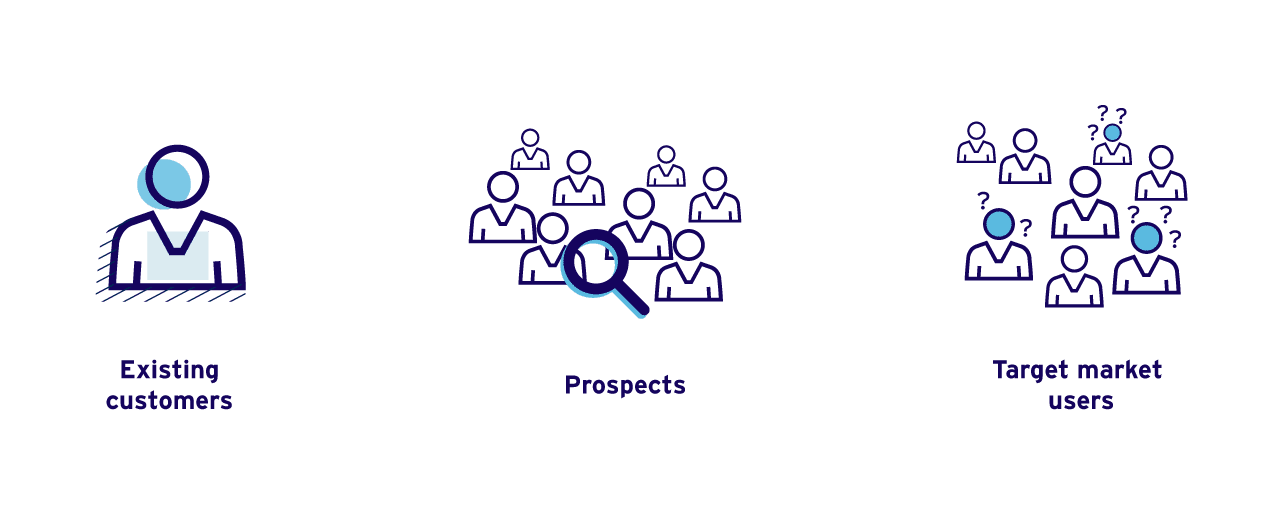Identifying market problems: Building products to meet customers’ needs
Read the highlights (click here)
To deliver products that solve your target customers’ problems, you must first identify market problems. These problems may be stated directly as customer needs or implied indirectly.
Your market consists of:
- Existing customers: People who have already purchased your product
- Prospects: People who have not yet purchased your product but are considering it
- Target market users: People in your target market who are not currently looking for a solution


Traps to avoid when listening to your market
Ensure that you listen to all of the people that comprise your market to avoid falling into the following traps. Each trap is not entirely bad, but can become problematic when it becomes your only focus. The key is to balance your focus to ensure that you are really listening to your entire market at the same time.
1. Focusing only on innovation and the competition
As an entrepreneur, it is easy to focus on building innovative solutions that do not connect directly to market problems; just because you can innovate doesn’t always mean that you should.
It’s also easy to pay too much attention to what competitors are doing and expend resources on trying to beat them to market. In many cases, the customer does not care about extra features.
Instead, ask the following questions to ensure that you are solving a problem for your target market:
- What problem does this solution solve?
- Is this a problem experienced by my target market?
- What would my target market do if I didn’t solve this problem?
While it’s always a good idea to keep abreast of what your competitors are doing, ensure that the market wants the problem solved.
2. Focusing only on customers
Henry Ford said, “If I had asked people what they wanted, they would have said faster horses.” Customers understand problems, but they cannot help you to move your product forward. They know what you provide, and tend to stay inside that mindset.
Customers are a source of input, but not the only source of input. This is why talking to prospects and target market users (who have not purchased your products) is key to rounding out the picture. They often see things beyond your current product.
3. Focusing only on revenue
By listening only to prospects, and delivering only what the next customer wants, you will gain revenue but miss out on market opportunities. It is critical to find a balance between prospects and customers to ensure that your future revenue is protected, while still keeping existing customers happy.
Stated versus silent market needs
Stated needs are explicit statements from your market that declare, “I want a product to do X.” While stated needs are important, they are not as powerful as silent needs, which are problems with as yet undefined solutions.
When interviewing potential users, your goal is to understand your target market’s everyday problems, whether or not you believe that you can initially solve those problems.
Example:
While doing market research, a major TV manufacturer uncovered the problem that people regularly misplace their TV remote control. Customers did not identify this as a problem that needed solving, but it was a common issue.
By listening to the customers’ silent need, the company was able to develop a feature that resonated with its target market (a “remote-control finder” button on the TV itself).
Using this outside-in approach enables you to concentrate on and solve your target market’s problems. It removes the guesswork from product development and reduces concerns related what your competitors are developing. Listening to the market is the best research you can do to ensure that you build the right solutions.

